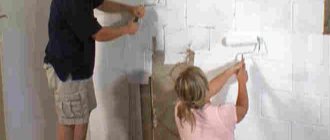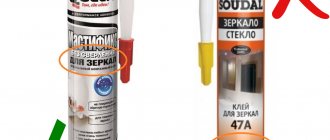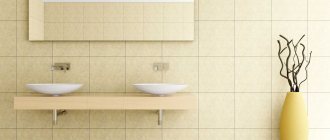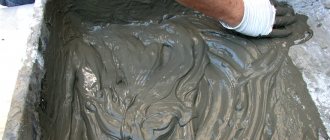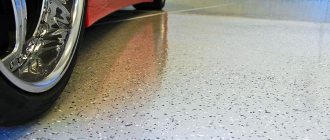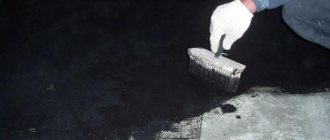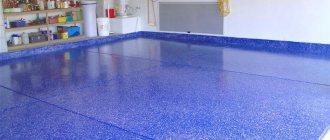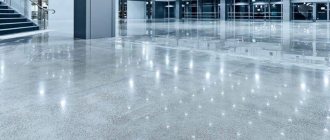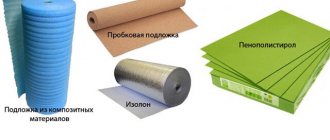Good day to all! It rained a lot recently and I came up with a new topic for discussion. Moreover, autumn is close, it will rain often. Therefore, a hydrophobic coating may be a good solution to protect your car.
The essence of a hydrophobic coating is to protect it from moisture. In simple terms, after treating the glass or body, raindrops and dirt will not stick to the surface, but will be able to roll off and fly away from the influence of the oncoming wind.
Varieties
Now they produce hydrophobic compositions for fabrics, on the basis of which clothes and shoes are sewn. It acquires water-repellent properties. A good thing. But they produce a separate type of auto chemicals for cars.
You can use protective nanocoatings for glass yourself. The main thing here is to buy something of high quality and from a trusted manufacturer. For example, Stay Clean and similar products.
Properties of hydrophobes
I cannot vouch for all anti-rain products that are up to
feet on the market. But a number of products have been tested. This made it possible to verify in practice whether the coating provides the glass or body with the properties that manufacturers claim.
Application procedure
Now let's talk about how to make this super coating with your own hands. To begin with, you buy a good product. You can do it yourself, but more on that later.
Let's assume that you bought some kind of anti-rain in the form of a spray, gel or paste. Now it needs to be applied to the surface of the body and glass. Remember that different hydrophobic chemistry is used for glass and car body parts. There may be universal remedies, but I would not recommend using them.
DIY water-repellent impregnation methods
- The first way is using available chemical solutions. With this processing of matter, its threads become impermeable to liquid, but the gaps between them are not filled. This is how denser waterproof fabrics are processed, thereby increasing their fire resistance. A well-stretched tent made of impregnated material with a roof angle of at least 35° does not let raindrops through. But if things lying in the tent come into contact with the fabric, then water penetrates through the pores and they get wet. Impregnation should be renewed every year if the travel season is quite long and there is a lot of rain. Ropes and slings can also be impregnated using chemical methods so that they also do not get wet or rot.
- The second method is water-repellent impregnation of textiles with an oil or wax-like composition that fills all gaps. As a result, it becomes completely impenetrable to air and water, but at the same time, it becomes heavy and flammable, and at low temperatures it is not flexible. Sparks can easily burn through it or even cause a fire. Materials used mainly for the floor of a tent, the lining of pack bags and bags, and sometimes backpacks are subjected to this method of processing. When handled with care, this waterproof fabric retains its waterproof properties for several years.
- The third (intermediate) method is to apply a composition containing fish or wood glue or casein. As a result, the material becomes dense and suitable for making both clothing and tents, as well as lightweight flooring (for example, a recipe with wood glue).
How to make your own anti-rain
The main element thanks to which industrial “anti-rain” acquires its water-repellent properties is a liquid with a high content of organic silicon, called polymethylsiloxane. Under this difficult name lies a completely ordinary silicone oil, which is part of many household lubricants, oils and water-repellent impregnations for clothes and shoes, which are quite common and used in everyday life. They can be found at any decent hardware store. Among them there are very inexpensive products that can effectively protect the glass and car body from dirt. After experimenting a little, it is easy to choose the most suitable working option, which will be much cheaper than any other for a car.
Option 1: paraffin based
With a little effort, you can get an even more affordable homemade anti-rain product. To do this you will need:
- Paraffin – 1 part (suitable for regular candles).
- White spirit - 20 parts.
- A regular glass jar (you can use another suitable container).
Anti-rain for cars, prepared with your own hands from these substances, fully copes with its functions.
It is obtained by dissolving paraffin in white spirit in the specified proportions. To speed up the process, it is recommended to first grind the paraffin, for example, by grating it on a regular kitchen grater. To obtain a uniform consistency of the mixture, it must be mixed several times in a container. This product can be safely applied both to glass and to the car body. It is not aggressive and will not damage seals or paintwork.
Option 2: anti-rain from fabric softener
If you are used to saving as much as possible, then you can use regular fabric softener as decent protection for your car from water contaminants. It has been noted that it has certain water-repellent properties. This product, of course, is not as effective and long-lasting, but it can significantly reduce the dirtiness of windows. However, it does not need to be specially applied to the surface.
It is enough to add a couple of caps of this kind of anti-rain to the windshield washer fluid reservoir under the hood. It will be automatically applied every time the glass washer is turned on, actively cleaning and smoothing the glass surface.
Available Chemical Waterproofing Compounds
- Dissolve 500g of laundry soap in 5l of boiling water. Soak the material well, then squeeze lightly. Without drying it, immerse it for a while in an aqueous solution of ordinary (potassium-aluminum) alum (500g per 5l, and for stronger impregnation you can take 1000g). Dry without wringing.
- Dissolve 450g of laundry soap in 4.5 liters of boiling water, add 250g of laundry soda and 450g of rosin powder. The processing procedure is the same. Both of these methods are good, but the first is simpler and faster (suitable, in particular, for fishing nets).
- One of the simplest and most effective methods, which also makes it possible to make waterproof fabric with fire-resistant properties, is impregnation with alum and lead sugar (lead acetate). In one 3-liter container, 150 g of lead sugar is diluted, in another, in the same volume, 150 g of ordinary alum (or another option - 75 g of both products for the same amount of water). They need to be allowed to settle and drained together, separating them from the sediment. Let the resulting emulsion stand for several hours, and then, when the liquid becomes clear, drain it, separating it from the sediment. Soak the textiles in this liquid overnight or even a day, and then dry without wringing. Since the composition is poisonous, the dishes should be thoroughly boiled and washed.
- Dissolve 400g of alum in 2.25 liters of boiling water, add 9.125l of H₂O at room temperature. Soak the textiles in this mixture for 24 hours, and then squeeze it out lightly and immerse it for 5-6 hours in another mixture: 225 g of lead sugar, poured 9.125 liters of warm water.
- Dip the material into a 40% solution of laundry soap, wring it weakly and immerse it in a 20% solution of copper sulfate. Dry without wringing. The material is painted green.
- In a combination of 285 g of quicklime and 115 g of alum per 12.3 liters of H₂O, keep for 12 hours, and then dry it without squeezing. This material is used for tents.
- Soak textiles, ropes, slings, nets for 4-5 days in a solution of copper sulfate (300g per 12l H₂O), then dry and rinse in soap emulsion. This will protect them from rotting and give them special strength.
The concept of a hydrophobic coating
A hydrophobic coating is usually understood as an effect that does not require wetting the base. We are talking about brick, glass, stone, plaster and so on. In addition, after treatment, the top layer becomes particularly resistant to corrosion and the negative effects of low temperature. These features are of greatest importance for concrete and reinforced concrete structures.
A hydrophobic coating is a special substance intended for application to various surfaces. It effectively protects them from the negative effects of high humidity levels. Modern manufacturers produce it in several forms at once - spray or liquid. This greatly simplifies the process of use, since there is no need to involve specialists with application experience. If desired, this coating can be easily applied to any surface, but to do this you will have to follow the existing instructions.
Oil and paraffin waterproof formulations
- Dissolve 300g of paraffin, 300g of petroleum jelly, 100g of glycerin in 2 liters of gasoline (heat in a water bath). Immerse the fabric in the hot solution for 25-30 minutes. During processing and when drying, keep away from fire.
- Heat 1 kg of drying oil and 200 g of paraffin or wax over a fire until they dissolve. Constantly heating this mixture, but not bringing it to a boil, coat the tent, especially its seams, with a wide brush, and then dry it.
- 7.5 kg of linseed oil and 300 g of wax (or 2,450 kg and 80 g) are boiled for 2 hours. The mixture is intended for water-repellent impregnation of tarpaulin.
- Boil 150g of litharge (lead oxide), 130g of umber and 11l of linseed oil with constant stirring for 2 hours, and then spread the hot mixture onto the stretched canvas.
- Mix talc with crude petroleum jelly in equal proportions, spread on fabric (coarse canvas, canvas) and rub in well.
- Rub the paraffin into a cloth stretched on a smooth surface (table, etc.), and then iron it with an iron. But another method is more effective: dissolve 450-500 grams of paraffin in 3.8 liters of turpentine, heat the turpentine in a water bath, then pour in the melted paraffin. Apply the hot mixture to the stretched fabric.
- A good result is achieved by rubbing boiled linseed oil. This should be done with your hands, and very energetically. To treat 1 m² you need about 0.25 liters of oil. It must be dried in the fresh air until the smell disappears.
- To get waterproof felt, you need to prepare a mixture of 70g linseed oil, 70g kerosene, 30g turpentine and 10g wax, heat it in a water bath, and then apply a thin layer to the felt and level it until it is saturated. It takes quite a long time to dry the felt.
- It is not recommended to use kerosene and gasoline for water-repellent impregnation of fabric, since it becomes low-elastic.
Application procedure
Now let's talk about how to make this super coating with your own hands. To begin with, you buy a good product. You can do it yourself, but more on that later.
Let's assume that you bought some kind of anti-rain in the form of a spray, gel or paste. Now it needs to be applied to the surface of the body and glass. Remember that different hydrophobic chemistry is used for glass and car body parts. There may be universal remedies, but I would not recommend using them.
The process of coating with anti-rain looks extremely simple.
This gives the body perfect smoothness and better streamlining.
Depending on the hydrophobic coating chosen, the effect can last from several weeks to several months. That is, you will have to repeat the procedure periodically.
Homemade anti-rain
If you don’t want to spend money on expensive auto chemicals, you can make a hydrophobic composition yourself. This is done like this:
take paraffin or a paraffin candle, as well as regular white spirit (the proportions should be 1 to 20);
- cut the paraffin into small pieces and mix with the solvent;
- mix the ingredients until smooth;
- Treat the body and glass with the resulting mixture (both surfaces are possible);
let the coating sit until all the solvent evaporates;
then take some good paper towels that don't leave lint and wipe down the car.
This homemade anti-rain lasts up to 2 months.
Everything is quite simple and clear. Whether you need such coverage is a completely different question.
Watch this video on YouTube
Watch this video on YouTube
Adhesive and casein waterproof formulations
- Prepare three solutions (50g of fish glue in hot water; 10g of alum in 0.3 liters of H₂O; and grams of white soap in 0.15-0.20 liters) and mix together. Apply the heated mixture to the fabric with a rag or brush. For clothing, you can take equal parts of all three ingredients. This composition is applied from the inside until the outside becomes wet.
- Dissolve 40g of alum, 20g of fish glue and 10g of white soap in 1 liter of H₂O, wet the cloth, squeeze and rinse in a four percent solution of lead acetate.
- To a mixture of 500g of milk casein, 12g of slaked lime and 0.5l of water, add a hot aqueous solution of 25g of neutral soap per 3l. The fabric must be thoroughly soaked in this liquid, dried, then placed for a while in a 2% aqueous solution of aluminum acetate (2 grams per 0.1 liter). Take it out, then put it in boiling water and then dry it.
- Soak the fabric in a hot aqueous solution consisting of 100 g of wood glue, 10 g of acetic acid, 10 g of potassium dihydroxide, per 0.9 liters of hot water. Dry without wringing.
Precautions for impregnation
When working with toxic chemical compounds, you must take precautions, use special protective clothing, gloves, goggles, and, if necessary, respiratory protection. Used dishes must be boiled and washed thoroughly.
By applying a hydrophobic coating to any item, you can be sure that the access to moisture will be completely blocked. This product is applied not only to expensive gadgets - phones and tablets, shoes, but also to building materials. Moreover, the hydrophobic material not only helps protect against water, but also helps the metal become more resistant to corrosion. Motorists have long noticed this technology. It perfectly protects the car body, and also helps keep the windows perfectly clean, which is important for drivers.
Example of hydrophobicity
Cell membranes
Cell membranes are made of macromolecules known as phospholipids. Phospholipids have phosphorus atoms at the heads of the molecules that attract water. The tail of the molecule consists of lipids, which are hydrophobic molecules. hydrophilic heads point towards water, and hydrophobic tails are attracted to each other. In small groups, phospholipids form micelles. As you can see in the figure below, the micelle is a small hydrophobic ball. Hydrophobic tails push water out of the center of the ball.
Cell membranes are composed of two phospholipid layers, known as the phospholipid bilayer. The middle of the leaf consists of hydrophobic tails that displace water and can separate the cell contents from the external environment. Cells have many special proteins embedded in the membrane that help transport hydrophilic molecules such as water and ions through the hydrophobic middle part of the membrane.
In eukaryotic cells, organelles are formed inside cells from smaller sacs created from phospholipid bilayers. Scientists have used the hydrophobic properties of phospholipids to create a different structure for delivering drugs and nutrients into cells. As you can see from the picture above, liposomes are small bags that can be filled with medicine. With the right proteins embedded in the membrane, liposomes will integrate the membrane of the target cell and deliver the drug inside the cell.
Plant leaves
Many plants have hydrophobic coatings on their leaves. It is important that rain and water are not absorbed through the leaves, as this would disrupt the flow of nutrients that depend on the passage of water from the root to the leaf. If water is allowed to travel by osmosis through the cell membrane and into the leaf, this will change the osmotic pressure in the leaves. and the water could not rise from the roots. Even aquatic plants protect their leaves with hydrophobic substances that allow nutrients to flow from the roots and water flows in one direction through the plant. Below is an example of a very hydrophobic leaf that causes water droplets to roll off the leaf.
Bird feathers
Many aquatic birds must protect their feathers from water penetration and secrete hydrophobic oils onto their feathers, which prevent water penetration. If you've ever heard the term "duck water," this phase refers to the hydrophobicity of duck feathers. Ducks and many other aquatic birds spend a lot of time underwater collecting food. However, they also need to fly when they come out of the water. If water were allowed to penetrate their feathers, the birds would become too heavy to fly. Birds clean hydrophobic oils that they secrete from their skin and special glands on their feathers. When they are submerged underwater, the oils form a hydrophobic barrier that prevents water from penetrating. Then, when they emerge, they simply shake off the water and can fly.
- hydrophilic – Molecules or substances that are attracted to water.
- polar – Molecules that have static electrical charges that can interact with water.
- Nonpolar – Molecules that have no static electrical charges and are much more likely to interact with other nonpolar molecules than with water.
- lipophilic – Substances that are attracted to fat are different from hydrophobic.
Hydrophobic coating. What it is?
Currently, discussions of hydrophobic coating occur on almost every forum. What kind of miracle is this that everyone praises? Yes, everything is very simple as it turned out. A water repellent is a liquid, after application of which the surface repels moisture, thus creating a certain protective layer on almost any object. Anyone can use this substance, as it is sold either in liquid or spray form. Most often, the water repellent is applied:
- on mobile phones, tablets - to protect against fingerprints when talking during rain or snow outside;
- on building objects - brick, concrete, plaster or stone - any even slightly porous surface allows water to pass through. Getting into the material, water penetrates into all the cracks, thereby causing swelling. And if bricks or concrete get very wet in the fall, then in winter all this moisture will freeze and begin to expand, rendering the building material unusable. This often leads to serious financial expenses, since the building has to be repaired;
- on glass and car body - this unique product helps motorists not only keep their cars clean, but also helps preserve the body from rapid metal corrosion;
- on stained glass, windows or shop windows;
- on ceramic tiles;
- on plumbing;
- on the facades of houses.
DIY hydrophobic coating
High humidity is the main enemy of most surfaces or structures. Throughout its existence, humanity has been constantly waging an invisible struggle with it. And it has long been proven that a hydrophobic coating copes best with it. Today there are plenty of them, and they honestly prove their right to use.
What is a hydrophobic coating
A hydrophobic coating is the effect of non-wetting with moisture the surface on which it is applied: brick, concrete, glass, stone, plaster, and so on. Moreover, thanks to it, the treated surface is more resistant to corrosive processes or the effects of low temperatures. Which is important for reinforced concrete or concrete structural elements.
Hydrophobic coating is a modern substance for treating any surface. The main goal and task is to protect it, first of all, from the destructive effects of moisture. Available in spray or liquid form. Therefore, you do not need to have special skills or involve a specialist to use it. You can apply a hydrophobic coating yourself to any surface, strictly following the instructions for use.
Scope of application of water repellents
Hydrophobic coating is used for processing finished products in factories with open warehouses, to reduce water absorption, increase heat resistance or frost resistance. And also before transporting it from these warehouses. For anti-corrosion treatment of car bodies or other parts made of metal. Also for the purpose of preserving the paintwork of the car. To strengthen and protect concrete, stone and other structural elements from the effects on their surfaces of weather changes and temperature changes, as well as high humidity.
How does a hydrophobic agent work?
Each hydrophobic coating has an active filler, which, interacting with the surface, forms a special very thin layer - a film. It is this that prevents moisture from penetrating through itself, creating a kind of anti-corrosion barrier. This coating can be used to treat fabric elements, metal, glass, even under very unfavorable weather conditions, extending their service life. The line of new and modern hydrophobic substances includes:
- wax compositions;
- Teflon coating;
- organic substances based on silicon;
- corrosion inhibitors with silicone;
Having a unique structure and composition, the hydrophobic coating is able to penetrate deep into the pores of the surface, creating a thin invisible layer through crystallization.
Types of hydrophobic material
The entire line of water-repellent coatings is divided into four main types:
- varnishes;
- impregnation;
- special paints;
- stains.
Varnishes are used to treat and protect wooden surfaces from damage, rotting and other destructive actions; they are produced unpainted, that is, without color at all. It lays on the surface easily, the service life is quite long. Painted surfaces become attractive and shiny. The processing process occurs in two stages: surface preparation and the process of applying the material itself.
Impregnations. Used in the construction of paths on terraces or the construction of building walls. The material is applied both during laying and upon completion. The use of impregnations is especially effective for porous surfaces, where, as a rule, water gets in, which subsequently leads to a deterioration in both the appearance of the surface and its inherent characteristics.
Stains. The basis of this product is drying oil, which has a particularly good effect on the quality of wooden surfaces and is perfectly absorbed by the latter. Apply by roller, brush or spray method.
Special paints. Suitable for all types of wall surfaces. The product is easy to apply to the material, odorless, moisture-resistant and hygienic, vapor-permeable and economical. The paint applies easily to a wet base. After drying, it becomes an excellent protective barrier against high humidity and its effects.
Hydrophobic agent and car
Hydrophobic coatings for cars can be purchased at almost any auto store. A body treated with this substance will protect it from corrosion or other contaminants for many years; it perfectly protects the paintwork and prevents scratches on its surface. If you apply a hydrophobic coating yourself by polishing the metal parts of the main components of the car, this will extend the life of the car as a whole.
Now such products are sold in a variety of forms. Modern hydrophobic coatings for cars are non-toxic and indifferent. And most importantly, they are able to completely protect the treated surface from damage due to high humidity. Hydrophobic coating for car windows has a unique water-repellent effect. And this is safe driving in downpours or heavy rain.
Waterproof concrete using additives
As you know, concrete is a material that has a high water absorption coefficient, so it is recommended to additionally and specially treat it. After all, moisture that penetrates its surface will not only lead to shedding of the base, but also damage to its integrity. Often, a hydrophobic coating for concrete applied to its surface can completely protect it from this incident. But in some cases this is not enough, and the structure of the material has to be changed in order to minimize the level of porosity, making it more durable.
Advantages of water repellents
The main and undeniable advantages of these substances are:
- Easier work with materials, such as concrete. In finished structures they are almost invisible.
- During the crystallization process, a light film is formed that can allow air to pass through.
- Non-toxic and do not contain substances harmful to human health, do not pollute the environment.
- Treating building facades with these products extends their service life.
Remember that in order to achieve the desired effect from water repellents, you need to correctly and skillfully take into account the nuance: each of the surfaces that will be treated with them has its own special means. And for this it is better to take either the advice of a competent person or entrust this matter to an experienced specialist. With the right approach and the right choice, surfaces and structural elements treated with it will serve you for many years.
Hydrophobic compounds in wall waterproofing
Since architecture and construction began to develop, one of their main elements is the roof. A reliable roof is a symbol of building protection. And we must admit that it is she who is exposed to the greatest influence of natural and temperature loads. Therefore, it requires additional attention and processing. If you use a hydrophobic coating for stone in construction or in finishing certain parts of a country house with this material, then the appearance of the material will always have its original appearance.
For this purpose, developers of water-repellent coatings have created special additives. They are able to influence the density of the solution and plasticity. The result is a concrete solution that is easy to lay, and when dry it is a hard, durable, waterproof and low-temperature resistant product. To achieve this effect when building with concrete, you need to use either in combination the additives presented below or separately:
- Colmatizing.
- Polymer.
- Plasticizing.
Comparative characteristics of water repellents
Hydrophobic agents first appeared approximately 40 years ago. They were based on: an organosilicon solution, which included polyhydroxyloxane, Na methyl siliconate and Na ethyl siliconate. These substances had negative qualitative properties: low in efficiency and fire hazard. Today they have completely disappeared from production. Modern products in this line are mostly made from polyorganosiloxane and its derivatives: polymethylhydride siloxane liquids, polymethylsiloxane resins, alkali metal alkyl siliconates or other compositions based on the latter. These products are non-toxic, non-hazardous, and not harmful to the environment or the human body.
Surface and volumetric hydrophobization
Surface hydrophobization is carried out by injection or applying the substance with a brush, roller, or spraying. Volumetric hydrophobization is carried out by injection into specially drilled holes in the walls of a building or other surfaces. Drilling is done in a checkerboard pattern, sloping deep almost to the very end. Next, hydrophobic material is introduced into these holes under a certain pressure. This method of surface treatment is considered more effective than the first.
This is due to the fact that the denser the surface is impregnated with a substance, the stronger the hydrophobic protection is considered. Such protection does not lose its properties for 30 years during surface treatment, and if volumetric treatment is used, then for the entire service life of the structure.
fb.ru
Hydrophobic coating. With your own hands: how to make a unique thing?
Of course, you can buy such a unique thing as a hydrophobic coating, or you can try to make it yourself. It is great for shop windows, car glass, windows, etc. The only thing to remember is that a homemade product will not protect surfaces for too long, and you will have to repeat the process after a while. The composition of homemade anti-rain is very simple: for one part of paraffin, take 20 parts of white spirit. The paraffin should be crushed as little as possible, filled with white spirit and stirred thoroughly and for a long time until the paraffin is completely dissolved. That's all. The nanotech product is ready.
This video provides a clear demonstration of the basic function of any hydrophobic coating.
Nanomaterial or hydrophobic coating
Each type of non-water contact layer is designed for a specific surface. For example, it is now actively practiced to add this nanomaterial to cement mortar, which significantly increases wear resistance, strength and improves its quality.
This material has many advantages when applied to various surfaces:
- the surface treated with a water repellent will remain dry in both direct and slanting rain;
- paving slabs, concrete, plaster, wood - all this needs nanoprotection to preserve and increase service life;
- objects treated or containing a hydrophobic “miracle” are much stronger;
- air access is not blocked, which allows these structures to retain heat well;
- Nano material can be applied even without experience.
The only drawback is that after applying it to walls, concrete, facades or tiles, allow it to dry for a day. And only then carry out tests.
DIY hydrophobic coating
Water is the source of vitality, but excess moisture can be extremely destructive, especially when it comes to building materials and structures. Therefore, very often when constructing structures, it is necessary to additionally impart moisture-proof properties to the structure in order to increase strength and durability and reduce possible monetary costs for repairs and elimination of other problems.
DIY hydrophobic coating
Concrete and brick are the main building materials. Having a porous structure, they are able to swell due to the absorption of water by capillaries and pores of the material, which is explained by their high water absorption (85-87%). Moisture can rise upward from its source to a height of up to two meters along a concrete or brick base. Penetrating inside, water disrupts the salt composition of the material. And with constant moistening of the structure and its drying, white efflorescence forms on the walls, which significantly affects the strength and spoils the appearance.
Concrete and brick are the main building materials
In addition, at low temperatures, water located inside the pores of materials can increase in volume by up to 8-9%, thereby creating additional pressure inside the walls of the structure. This leads to the creation of internal microcracks, and subsequently to the destruction of the cladding and the formation of cracks on the outside of the building, and hence to a deterioration in the thermal insulation properties.
Wet wall in the house
None of the natural materials is able to withstand this, therefore, to give the materials moisture-proof properties, various water repellents are used. Concrete, brick and any natural stone should be subjected to this treatment, as they can absorb up to 85% of water from their surface.
Hydrophobization
What are water repellents?
There are two types of water-repellent compounds:
- powders that are added to concrete and brick at the stage of their manufacture;
- liquid impregnations that are used to treat the surfaces of already constructed buildings.
The hydrophobic coating is a complex organosilicon polymer compound, less commonly organic resins or metal alkyl siliconates, and does not form a film on the wall surface.
Water repellent h3O Stop concentrate Neomid 5 l
The composition, penetrating several millimeters deep into the material, evaporates from its surface and does not change the appearance of the wall, leaving a protective layer. Treating the walls of buildings with such impregnations increases the ability to retain heat and durability, and provides protection from the negative effects of the environment. At the same time, water absorption is reduced by 12-19 times, which significantly reduces the likelihood of the development of fungi and mold.
Water repellent Monolith Hydro
It is important to pay attention to the fact that water repellents do not heal cracks, so in rare cases treatment with water-repellent impregnations is not practical.
The consumption of water repellent on concrete and brick walls is 250-500 ml per 1 sq.m. The moisture-proof impregnation needs to be renewed every 8-10 years.
Methods for applying hydrophobic impregnation
Before using a water repellent, the surface should be thoroughly dried (rare compounds are applied to a damp surface) and cleaned. Mold, mildew, traces of grease, rust and efflorescence must be removed from the wall surface with special solutions and compounds.
Methods for applying hydrophobic impregnation
- Water-repellent impregnation can be applied using a roller or brush.
Application with a brush is preferable since you can control the consumption of the product and work out the corners and texture of the material (especially when it comes to decorative facing stone). It is recommended to use brushes with medium-length artificial bristles. The brush will allow you to apply the impregnation in an even layer. Hydrophobization of bricks - When processing large surfaces without a clearly expressed textured surface, it is permissible to use a spray gun and spray guns. You should be careful and ensure that the impregnation is applied evenly.
The most famous water repellents
Water repellents are classified into surface or volumetric agents. During surface hydrophobization, walls are treated with a brush, roller or spray. Volumetric is performed by pouring the solution into pre-drilled holes over the entire area of the surface to be treated. The second treatment method is preferable, and the effect is protected until the building is demolished, while with the first treatment method it lasts only 15-25 years.
The most famous and most frequently used means include:
- “Kontraquin” or GKZh-11 (Hydrophobic organosilicon liquid). A special feature of the product is the fact that the impregnation is sold in the form of a powder, which must be diluted with water in a ratio of 1:5. If necessary, the addition of color pigments is allowed;
- “Monolith Hydro” (also diluted with water 1:5 and allowed as an additive when mixing cement and concrete mixtures);
- “Monolith 20M” (forms a thin protective gel layer on the treated surface, partially penetrating the pores of the material, somewhat increasing the strength of the structure itself);
- “Granit-28” (impregnation is used not only for waterproofing walls, but also floors; studies have shown that its use increases the strength characteristics of materials);
- hydrophobic products of the Ecodel series (significantly reduce heat loss and serve as a primer coating for walls and floors, can be used for both interior and exterior work);
- “AquaTop” (the principle of impregnation is that when applied it will enter the pores of the material and displace the existing water from there, and then evaporate from the surface, leaving behind a protective layer);
- products of the “Neomid” series (in particular Neomid h3O stop, ideal for use on natural or artificial stone, various types of brick and concrete, as well as reinforced concrete structures);
- moisture-repellent impregnation "Crystallizol" (is a multi-component composition with different effects, the main advantage of the drug is that it can be used in any application method and on all surfaces without exception, both simple and complex textured).
Water repellent Kristallizol
Treating wood with water-repellent impregnations
Undoubtedly, wood belongs to the category of the most commonly used materials in the construction of structures and its interior decoration due to its ease of processing, good consumer and aesthetic properties. Regardless of the quality in which wooden elements are used - as a material for the construction of a building or, among others, for finishing work, pre-treatment with special hydrophobic compounds is a necessary condition for successful and long-term operation in the future, since moisture negatively affects wood, significantly shortening its lifespan. his service.
Exposed to moisture, elements become more sensitive to mold, fungi and insects, which will ultimately affect the condition of the entire structure as a whole. When choosing a protective impregnation for wood, first of all, you should give preference to solutions with moisture-repellent properties.
Hydrophobic impregnations
The range of impregnations used to protect wooden structures is quite wide. Modern manufacturers of building materials offer both highly targeted solutions and multifunctional ones.
The first (narrowly targeted) include impregnations, the main task of which is to reliably protect wood from exposure to excess moisture and preserve its integrity. Such impregnations can be used as an independent product, or can be added to special bioprimers before using paints and varnishes. Bioprimers are applied to previously prepared and dried wood and left until completely dry, and only after that can you begin painting or using varnish.
The group of multifunctional products includes impregnations and water-repellent solutions with various additional effects. The use of such tools significantly saves time and money.
- Hydrophobic impregnations with tinting properties.
These products contain special color pigments. Their use allows you to quickly process wood and give it a more pleasant appearance, focusing attention on the design and hiding irregularities. In addition to acquiring moisture-resistant properties, the color of the wood becomes deeper and more saturated. Most often, such impregnations are used when treating interior spaces. Hydrophobic impregnations with tinting properties - Impregnations with enhanced protection.
These impregnations contain special active substances that prevent the action and development of mold and fungi. This type of moisture-repellent impregnation is used when treating external facades of wooden structures, showers and steam rooms. Such products have a maximum level of moisture protection and a colorless texture. Impregnations with enhanced protection - Hydrophobic fire retardants. The specially developed composition of such complex products allows you to protect wood from moisture and resist high temperatures; in other words, it gives the wood fire-resistant properties. When treating interior spaces with an increased risk of fire, the likelihood of a fire becomes minimal. This is the most multifunctional impregnation, combining all possible properties, with the exception of tinting. It is recommended to renew the layer of such impregnation every 4-5 years. The product contains substances that are safe for humans and the environment.
Treated wood is more resistant to moisture, dirt and dust. This is especially important for rooms with high humidity – baths and saunas.
Assortment of wood impregnations
Because the market for construction and auxiliary materials is constantly evolving, introducing new brands to the consumer. It would be useful to mention already well-proven products in this area.
Impregnation for wood
- The most popular among hydrophobic products today are Belinka brand impregnations. They achieve their high quality and reliability thanks to a carefully developed composition. As a rule, products from this manufacturer are multifunctional, which significantly saves time during repairs and construction. In addition to moisture-proofing properties, these impregnations protect against sun exposure, preventing fading and cracking.
- Another well-known and no less reliable brand is Aqualazur. The range of impregnations in this series meets the highest requirements and is extremely wide. The manufacturer offers products for both interior and exterior use. Impregnations do not contain toxic substances, dry quickly and are water-based.
- The Neomid series products have good moisture-protective properties. Impregnations from this manufacturer create a durable waterproof layer on the surface of the wood and keep the wood from swelling. The most popular product of this brand is Neomid Bio Color.
Wood impregnation
When choosing a particular impregnation, you should be guided by certain principles:
- the purpose of hydrophobic impregnation;
- additional requirements for impregnation (protection from mold, mildew, UV rays, etc.);
- Should the impregnation perform tinting properties?
This, as well as the area of work carried out, will significantly affect the price, which in any case will be lower than eliminating possible damage. The approximate consumption of hydrophobic impregnations is 200-450 ml per 1 sq.m, depending on the “texture” of the wood.
Also read on our website an article about do-it-yourself selective coating.
Video - Hydrophobizer NEOGARD. DIY hydrophobic coating
tolkostroyka.ru
